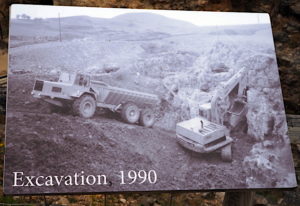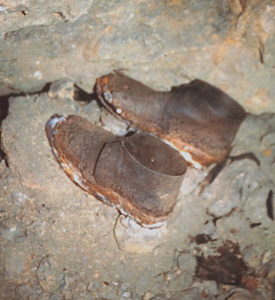The Great Orme Bronze Age copper mines are one of the most significant archaeological sites in Britain.
I remember all the excitement when the mines were first discovered in 1987 and they have been on my todo list since then. It’s taken me a long time to visit but it was definitely worth the wait. This truly is a remarkable site. I ran out of superlatives to describe it.
The site is owned by the archaeologists who first began excavating and they are still working there. Everything is funded from ticket sales, so the archaeologists also work in the shop and ticket sales as well as excavate. They are very happy to stop and talk to visitors and answer questions.
There is a short video about the mines and very good exhibition of artefacts found during the excavations. There is plenty of information about the site and its significance. The highlight was a walk through some of the Bronze Age tunnels. This is not for the claustrophobic or the very overweight. I appreciated my hard hat.
Although people have known for years that copper was mined in the area, it had always assumed the workings were Roman. They aren’t and the Romans didn’t mine here.
Radio active dating indicated the mines were active between 1700-1400BC. They were the largest copper mines at the time and the copper was mined on an industrial scale. Tools and weapons were traded across Britain and western Europe.
Bronze tools revolutionised many different aspects of life. Not only were the axes harder and more durable than stone, they were able to cut down larger trees. Large areas of land were cleared for agriculture. They were able to build larger and better boats for sea travel and trade. Bronze tools from the from the Great Orme Mines has been found across Britain and Europe. As well as axes, the bronze was used to make spears and weapons.
Copper mining seems to have stopped with the arrival of the Iron Age and the Romans didn’t seem to be interested. Mining began again in the late C17th, when there was a rising demand for copper and improved pumps for removing water. These mines were over 200m deep, exploiting ores well below the Bronze Age mines.
Commercial mining ended around 1850 as trade laws made it increasingly uneconomic to mine copper in the UK, and there were increasing problems with the deep mines filling with water. Small scale mining continued until 1881. Mine waste and buildings covered the site of the Bronze Age mines.
In 1987, there was a scheme to landscape the area and built a large car park. An underground survey was required to ensure the stability of the ground.
The diggers came in to remove the waste and quickly discovered the remains of the C19th Vivian shaft which led into the depths of the workings. When the archaeologists went down this, they discovered a labyrinth of Bronze Age passages and chambers, as well as the remains of mining tools. A pair of C19th miner’s clogs was also discovered which may have been left as an offering to the ‘mine spirits’.
As more waste was removed, the extent of the very early open cast mining was exposed. Once the surface deposits had been exhausted, the miners tunnelled underground following the veins of ore. The early tunnels were often narrow and twisting. Some were so small they could only have been worked by children. The mine reached depths of 70m when they encountered problems with flooding.
When the significance and importance of the site was recognised, plans for a car park were shelved and planning permission gained to open the site to the public. Since excavation work began, over five miles of Bronze Age tunnels have been discovered. This is estimated to be less than half the extent of the original tunnels. The archaeologists are convinced there is still a lot to be discovered. As yet, they have found no evidence of any Bronze Age settlements which are thought to still be buried under the vast area of C19th waste.
This is a truly amazing site. There is plenty to see and it combines nicely with the “Marine Drive bus tour”:https://www.silvertraveladvisor.com/review/attraction/210164-review-marine-drive-llandudno or a ride on the “Great Orme Tramway. “:https://www.silvertraveladvisor.com/review/attraction/194829-review-great-orme-tramway
“Website”:https://www.greatormemines.info/









